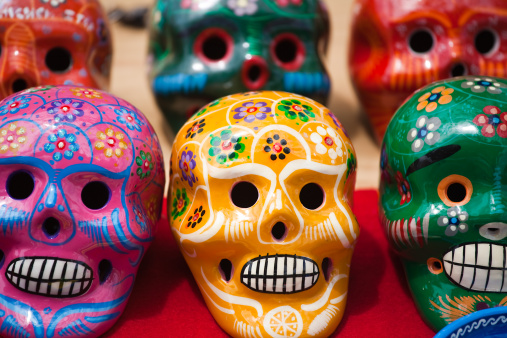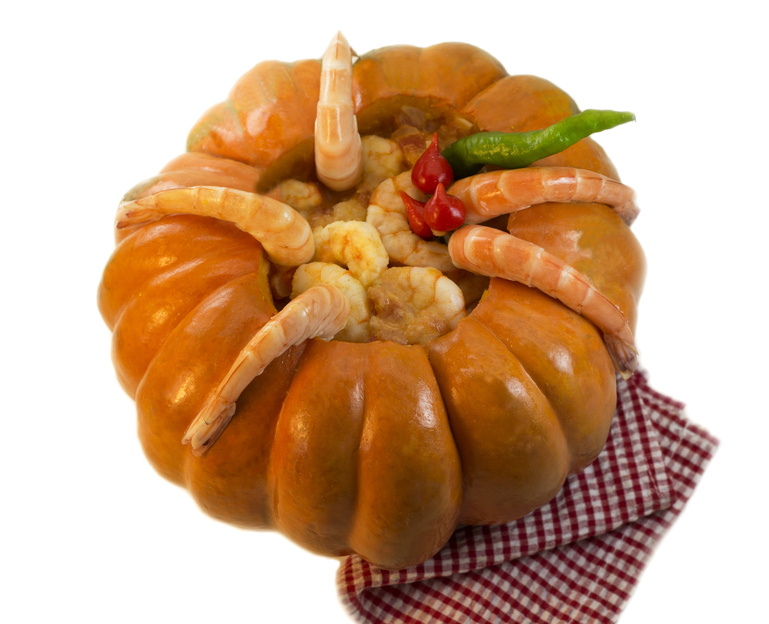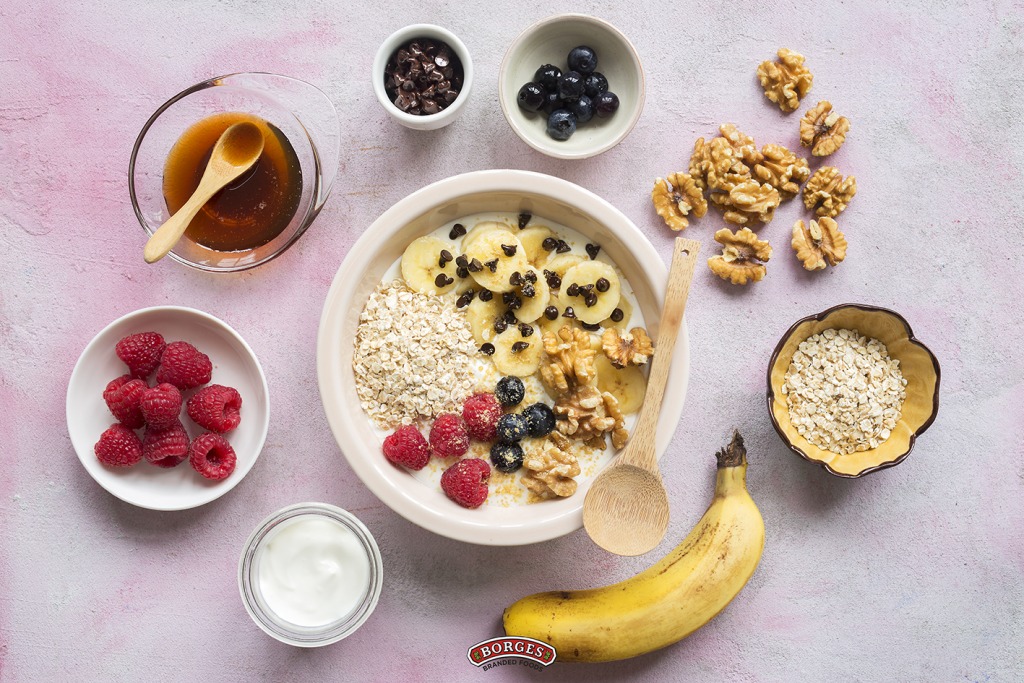Despite the festive mood of Halloween, we should remember it’s a special occasion to remind those who are gone, sometimes with an important presence of food. But not all cultures celebrate the absence of the beloved in the same way. Neither on the table, nor away from it. Today we embark on a quick trip around the world to discover some of these traditions:
Spain
Holy diversity! The All Saints festivity arrives and reaches every corner of the country, and from each kitchen comes out a different dish, usually a sweet recipe. Despite the arrival of pumpkin as a main ingredient in recent years, this vegetable has yet to find its place among other traditional meals such as chestnuts, panellets, pestiños, or the so called ‘wind fritters’…
In the regions of Catalonia, Valencia and the Balearic Islands, they use to eat roasted chestnuts, sweet potatoes and also panellets, a kind of marzipan made with sugar, almonds, egg and potato or sweet potato, coated with egg and pine nuts, although we may also find some made with coconut, chocolate, coffee, quince … Sweets made of nuts and sugar to mitigate the memory and nostalgia. Snacks such as fritters, whose recipe varies depending of the region -the base is a fried pastry filled with cream -, or huesos de santo (holy bones) from Castile, whose cylindrical white mass of marzipan reminds of a real bone, filled with yolk, chocolate, coconut, strawberry, nougat, sweet potato, chestnut or some exotic fruit. Also in Castile (central region of Spain) puches castellas are typical -water porridge cooked with anise or sugar -, while in Andalusia they eat gachas de leche (milk gruel), made with flour, milk and honey or sugar seasoned with lemon, cinnamon and anise.
But there’s so much more. The quince, which in Extremadura is traditionally eaten in the fields, or the Andalusian fritters – flour, olive oil and sugar to which you can add lemon, honey and sherry -. Their consumption extends to Christmas. In Cadiz, on the last day of the month (called Tosantos there), they disguise rabbits, pigs and chickens in the markets, and make dolls with fruits, vegetables and nuts. Obviously… Spain is different!
USA
Despite what most people – outside the States – think, Halloween is not an original American tradition (now you can boast of general culture and even cuisine knowledge), but Irish. Nevertheless, immigration to the US and the American ability to export local – and non local – traditions worldwide, did the rest.
Halloween in USA would not be possible without a pumpkin cake or a pumpkin flan, as well as the reproduction of its well-known macabre iconography in the presentation of almost every dish served. For example, black fruit punch (non-alcoholic, ideal for children, main characters of this terrifying night), funeral sandwiches (with the letters RIP on the bread), meringue ghosts…
Apples are also very important these days because it is time of harvest. They are usually consumed in their sweetest variety or caramelized. Sweets won’t be missing this days either, with all their gloomy names: Black and Orange Boo Cups, Creepy Crawlers, Mini Pumpkin Patch Cakes, Nutty Ghosts, Spider Critter Cakes, Spooky Snack Hands, Frightful Sweets, Shortbread fingers, Sugar cookie ghosts, Gingerbread Jack O’ lanterns… It’s your call: Trick or treat?
Brazil
Here the tradition of Halloween (el Día das Bruxas, or witches day) is celebrated on October 31st and is gaining importance in calendar of festivities, thanks to the culinary contribution that identifies the event.
The pumpkin becomes omnipresent. A clear example is the camarão na morronga (prawns with pumpkin), one of its most iconic and tasty dishes. Jot down: part of the pumpkin is emptied and put in the oven. Then it is stuffed with prawns, marinated with salt and lime juice and lightly sautéed in oil, some cheese and a sauce of garlic, onion, parsley, chives, cilantro and tomato. If you ever get to taste it, we bet you won’t be able to eat just one portion.
Poland
Cemeteries from all over the country are decorated for the occasion and in the evening, candlelight shines everywhere. In this time of the year cold becomes more intense – the truth is, it’s already cold long before -, so dishes that warm the body and soul are much appreciated. That is, dishes that would raise the dead, as bigos, a very popular recipe using fermented sauerkraut with mushrooms and meat of all kinds. All this accompanied with a wine that is cooked for several days.
Families gather at home to eat together, leaving behind the days when they did it in the cemetery itself (a common practice between the fourteenth and eighteenth centuries), where food supposed to come from beyond was eaten: poppy seeds, honey, nuts, forest products, dehydrated mushrooms, wheat…
India
On October 31st you won’t find no celebrations to remember the deceased, nor Halloween parties, though in India, with its colors and cheerful spirit, that would be a very interesting fusion, like taken from a Bollywood film. On the other hand, these are dates where Diwalli – or festival of light –, is celebrated. It hasn’t a fixed date on the calendar, but it usually takes place in October. And what about the food? It is present even in the decoration of the facades itself, which are illuminated by burning butter and vegetable oil. They eat plenty of sweets which, in fact, they all love in India (and who doesn’t?). They have a huge variety of them which are given away to family and friends.
Mexico
Here, the Todos los Santos (All Saints’) Day is like a national holiday. This popular event is tightly related to Mexican culture, a country capable of turning its traditions and even its origins into a memorable feast. The veneration of the dead is huge, so the original Irish tradition of Halloween cannot compete in Mexico with the local tradition of decorating graves and raising home altars with photos, food and beverages that the honored dead liked. To banish sadness of remembering those which are no longer among us, they prepare a sweet bread called Pan de Muerto (bread of the dead), made with yeast, served at dinner during which they give away skulls made of sugar and decorated with an inscription referring to the one they are given to.
China
Halloween? It’s quite likely that if you ask about this celebration, most Chinese (and that are tens of millions of them) won’t know what are you talking about. As a result of globalization, some – the youngest, especially in big cities – dress with costumes related to this festival in memory of the dead, but they don’t eat anything special. November 1st is neither celebrated as in Spain or Mexico.
To counteract the Western influence in this dead related festival, the Chinese have their own qing ming, i.e., the Tomb Sweeping Day, held in April. People visit cemeteries carrying willow branches which they place on doors to ward off evil spirits and prevent becoming yellow dogs in their next life. It’s time then to eat some green glutinous rice dumplings called qing tuan.
Now tell us… How do you celebrate these days at home, and which special recipes do you prepare?







